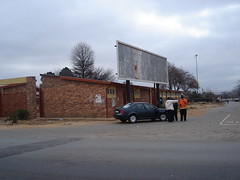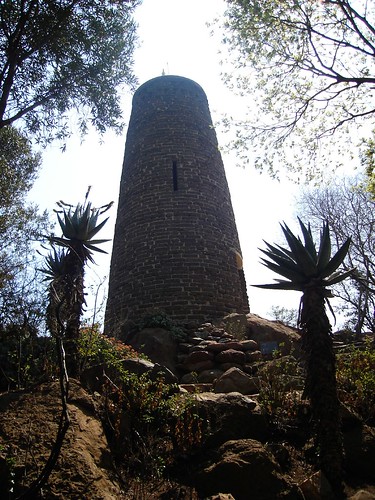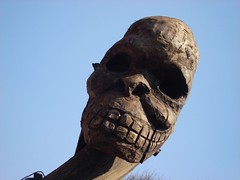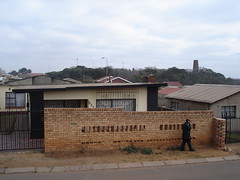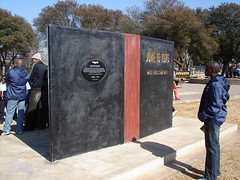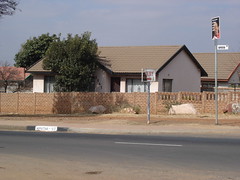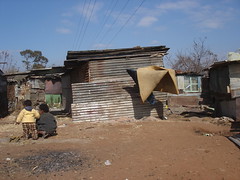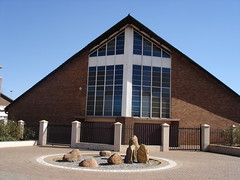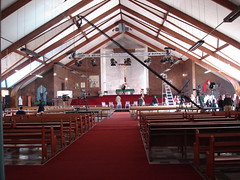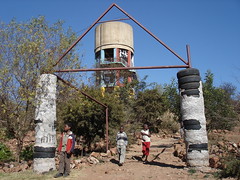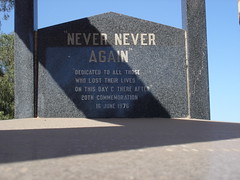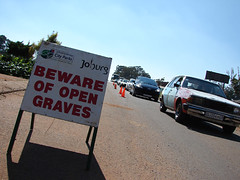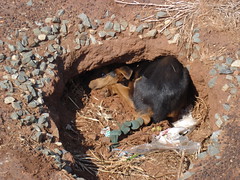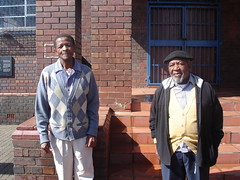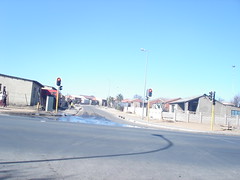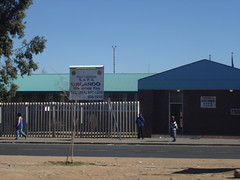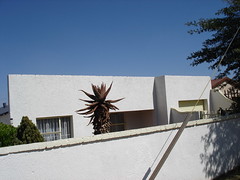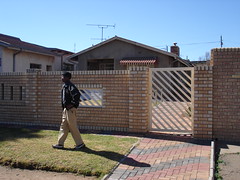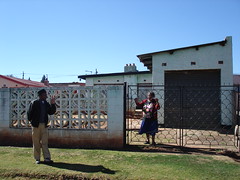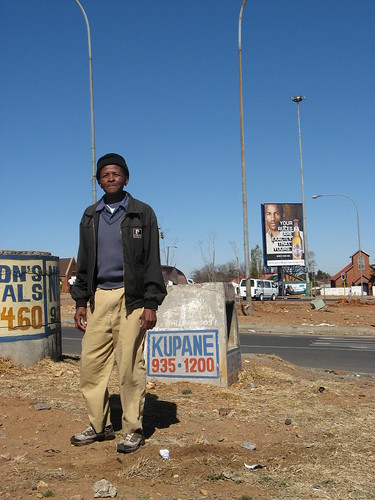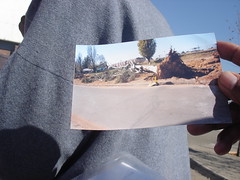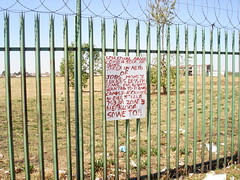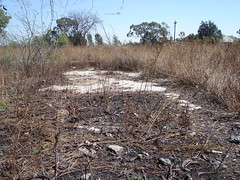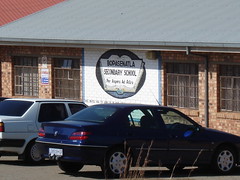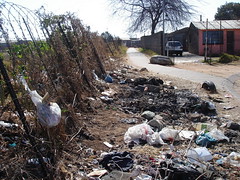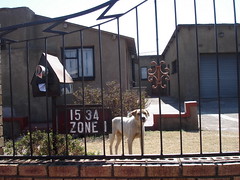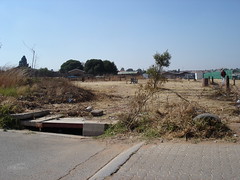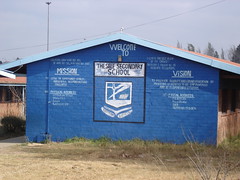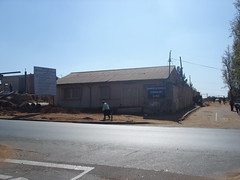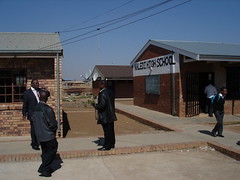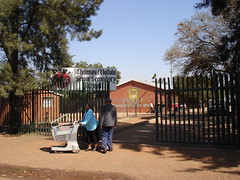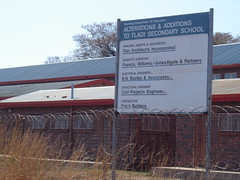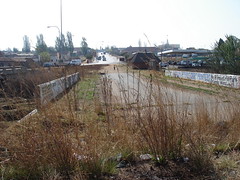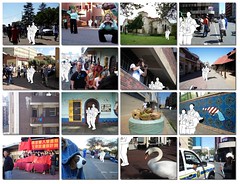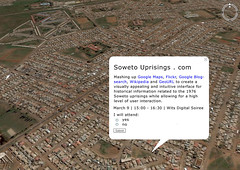Robert Berold was a white english teacher at Morris Isaacson School in 1976. On June 16th his life was saved by an unknown student. Here is his story: I was driving in my yellow Peugeot 404 bakkie which was our wedding present a few months ago. It was a cold sunny Wednesday. On the seat was a tape player with the Fairport Convention singing their version of "Sir Patrick Spens":
I saw the new moon late yestreen
with the old moon in her arms
I was teaching (illegally) in Soweto. Sir Patrick Spens was one of our matric poems.
For weeks the tension had been getting tighter and tighter. Dr Andries Treunicht the ex-dominee who headed the Department of Bantu Education had decided that schools – some schools anyway – were to be taught in the medium of Afrikaans. That meant all subjects – geography, maths, whatever – would be taught in Afrikaans. A provocative and crazy idea. Treurnicht knew that black students were weak in Afrikaans, in fact hated Afrikaans, the language of the oppressor. So why was he doing this? Sheer shit-headedness, the racist drive to be as shit to blacks as possible. The parents had formed a committee and gone to see the minister, but Treurnicht was not backing down. The deadline was next week.
Every morning I drove from our communal house in Houghton, onto the M1 South into Booysens, onto the no-man's-land road to Soweto, Diepkloof, left past Orlando Stadium, past the very first red brick houses, past the Orlando police station with its blue light and twitching radio masts, over the bridge to Phefeni, up to Maponya's store, down through the pleasant trees of Mofolo village, into the sea of asbestos roofs of White City Jabavu, up the hill and left into the Morris Isaacson Senior Secondary School yard enclosed in scraggly wire.
This morning no students were to be seen. Fanyano Mazibuko, the maths teacher, was driving out in his white VW beetle. 'The students have all gone out on a march' he said, 'I'm going to look for them.' It didn't look like Patrick Spens would get a hearing today.
I'd joined Morris Isaacson because I wanted to be in a black environment, which was a hard thing to do in the 1970s and usually illegal. For various reasons or delusions I trusted black people more than whites. When I came here I offered to teach maths but Mathebathe the headmaster said 'We need you to teach English, it's your home language, we can learn from you'. So here I was, my first teaching job, unqualified to teach, with huge classes, 50 or more kids, getting to grips with a ridiculous rote-learning syllabus. Silly textbooks, lists of comparisons, of idioms, all had to be learned off by heart. As white as snow, as black as pitch. As fast as a stolen car, one student wrote.
I had literary ambitions for them. I'd started a class library, got them to read books, introduced them to contemporary black poetry. They didn't feel the same way, they just wanted to get through their exams. They were curious about me, though, and once they'd established that I was too naive to be a police spy, they were friendly. Occasionally the daring guys from the Black Consciousness Movement would come to the school. The whole school would walk out of class for an hour while they addressed them. South Africa was going to be free, they said. Black man, you are on your own. Then they would disappear before the police could catch them.
For the past week, as the tension had been rising, posters had been going up 'YESTERDAY MOZAMBIQUE TODAY ZIMBABWE TOMORROW AZANIA'
'AFRIKAANS -- LANGUAGE OF THE OPPRESSOR'
And now today the whole school had gone off before assembly, marching to Naledi High. Nobody knew about it, not even the teachers. As I heard about it later, they were picking up each school and marching to the next one. The headmaster came and told the bored staff to stay in the staffroom. The students would be back soon, he said.
A few hours passed. The staff room was large and dark. Outside it was a bright winter morning. I was reading a library book, a Time-Life book on the religions of the world. Buddhist monks with shaved heads in yellow robes were praying in a temple somewhere in Asia. Then a boy burst into the room, running, very distressed. The students had been blocked by the police at the Orlando Bridge. They'd been shot at, and some students had been shot dead. And now they were on the rampage, burning buildings and cars.
We rushed outside. From the direction of Orlando, there were plumes of smoke rising. What now? Stay put, said the headmaster. More students arrived, out of breath, frightened, angry. Some of them had looted a liquor van and brought bottles of booze for the staff. Some of the male teachers started drinking voraciously.
I went outside again. The plumes of smoke were closer now. Not far away, in Jabavu, a building was burning, I could see the flames. Students were running in the streets. A white man was driving a municipality van, swaying from side to side down the road. His windscreen had been smashed and his face was bleeding. Boys threw rocks, they hit the car, but he carried on driving, bleeding.
Next thing the school was swarming with students, angry, running, like an ants nest that had been turned over. Some of them saw me, one of them shouted Hey Mr Berold, you'd better hide, these students have killed whites they will kill you! The same boy took me to the book room, a big walk-in room with a security door where the textbooks were stored. He told one of the teachers – you must lock him in here until the other students have gone. I stood in the bookroom listening to angry voices, slogans being shouted.
The students went off, running, and I was allowed out. Back in the staffroom, some of the teachers were now completely drunk from all the free booze. A building quite near the school was burning. We sat there in the semi-dark. How will I get out, in my brand new yellow car? We can take you in the boot of one of our cars, says one of the teachers.
The door burst open again. A scary sight – about 20 white soldiers in camouflage uniform. Or maybe they're policemen. They’re wild-eyed. All of them have sten guns. They glare at the black teachers like I've been taken prisoner. Their commander is dressed in a purple suit. 'Who are you?' he says to me. 'I work here' 'You better come with us'. I say goodbye to the teachers, feeling ashamed of being white, being claimed by these men with guns. Outside in the road there is a column of vehicles, an armoured car in the front and one behind. It's a convoy rescuing stranded whites. The street is lined with silent people, some of them my students. The police keep pointing their gun at the crowd, some of which scatters. The convoy moves slowly. I look at the angry mournful eyes. At one point the convoy stops, the police jump out angrily, students run madly across the veld, away from the guns.
Next thing I am in Booysens again, the busy everyday traffic of industrial downtown Johannesburg. The human storm hasn't reached here. Nobody yet knows what is happening in Soweto, not even the parents of the children who've been shot at.
I drive home with my tape recorder and Sir Patrick Spens. I don't know what to do or say. I lie down on the lawn of our communal house and try to think. There is nothing to think. I hear a loud noise overhead like a giant lawnmower, three army helicopters travelling southwest. I know where they're going. To Soweto. It's a chilling feeling.
That evening I go over to my parents' house. TV has just started up in South Africa. The only good programme, which I watch with them every Wednesday, is about the Second World War, called The World at War. Before that, the news. Some disturbance in Soweto. Nothing about children getting killed.
Over the next three days, 300 people died in Soweto, as children set up roadblocks, ignored their parents, and fought police with stones and petrol bombs. Morris Isaacson didn't open for classes for another two years. I wrote later, in a poem
I was lucky
the winds of blood blew past me
I wish I knew the name of the boy who locked me in the bookroom. He saved my life.

